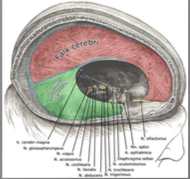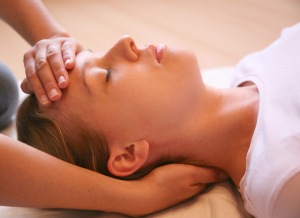I’ve discovered cranialsacral therapy is extraordinarily useful in treating conditions for which people take life time medications. Some examples include: insomnia, sleepiness, dizziness, headaches, tinnitus, sinus pain, difficulty concentrating, memory issues and even depression or anxiety. For cranialsacral therapy success testimonials, go HERE.
What is CranioSacral Therapy (CST)?
A method utilizing light touch manual therapy to assess & treat problems affecting the CranioSacral system
When to use CST
Indications
- Chronic pain syndromes
- Sleep Disorders
- Headaches
- Neuralgia
- Fibromyalgia
- TMJ dysfunction
- Reflex sympathetic dystrophy (RSD)
- Degenerative neurologicaldiseases – multiple sclerosis, Parkinson’s disease, dementia
- Endocrine disorders
Contraindications
- Acute stroke
- Cerebral aneurysm
- Recent skull fracture
- Herniation of medulla oblangata
The CranioSacral System
- Semi-closed hydraulic system comprised of cerebrospinal fluid (CSF), and membranes (primarily Dura Mater) that surround the brain and spinal cord, bones attached to dura mater, and system regulating CSF flow
- Dura mater attaches to cranial bones, posterior bodies of C2 & C3, sacrum, & coccyx
- Maintains the physiological environment of central nervous system (CNS)CranioSacral Rhythm (CSR)
- 6-12 cycles/minute
- Production & reabsorption of CSF
- Expansion phase = external rotation
- Contraction phase = internal rotation

Restrictions of the system can directly affect CNS function contributing to widespread dysfunction
- Detect restrictions through gentle palpation
- Osseous vs membranous restriction
- Any restriction in sutures, fascia, membranes, & other tissues that impede free motion of system, tissues, or the body’s energies
- Normal dural tube glide = 0.5 – 2cm
- Once restriction is found, hold position and wait for tissues to release
- Osseous vs membranous restriction
Brief History
- William G. Sutherland introduces cranial osteopathy
- Cranial and sacral bones must remain mobile to accommodate pressure changes1975-1983
- John Upledger – biomechanics professor at Michigan State University discovered falx cerebri contained nerve tracts
- Identified a communication system between intrasutural nerve receptors and walls of brain ventricles where choroid plexus is located
- Developed concept of CST
- Differs from cranial osteopathy by including influence of dura mater
Tissue Release
- Tissue Release = Sense of softening and relaxation that is perceptible when the technique is successful
- The body gently moves to free itself
- Can also occur in form of heat, pulsing, muscle twitching, breath change
- May be emotional in form of tears, laughter, memories
- Multiple factors
- Enhance fluid motion (CSF, blood, interstitial, intracellular)
- Desensitize facilitated segments
- Viscous changes to lengthen tissues
- Release muscle tonus
- Increased flow of “energy”
- Increased heat radiating from body part
References
Upledger J. CranioSacral Therapy: What It Is, How It Works. Berkley, CA: North Atlantic Books; 2008.
Jakel A, von Hauenschild P. A systematic review to evaluate the clinical benefits of craniosacral therapy. Complementary therapies in medicine. Dec 2012;20(6):456-465.
Castro-Sanchez AM, Mataran-Penarrocha GA, Sanchez-Labraca N, Quesada-Rubio JM, Granero- Molina J, Moreno-Lorenzo C. A randomized controlled trial investigating the effects of craniosacral therapy on pain and heart rate variability in fibromyalgia patients. Clinical rehabilitation. Jan 2011;25(1):25-35.
Mataran-Penarrocha GA, Castro-Sanchez AM, Garcia GC, Moreno-Lorenzo C, Carreno TP, Zafra MD. Influence of craniosacral therapy on anxiety, depression and quality of life in patients with fibromyalgia. Evidence-based complementary and alternative medicine : eCAM. 2011;2011:178769.
Nourbakhsh MR, Fearon FJ. The effect of oscillating-energy manual therapy on lateral epicondylitis: a randomized, placebo-control, double-blinded study. Journal of hand therapy : official journal of the American Society of Hand Therapists. Jan-Mar 2008;21(1):4-13; quiz 14.
Raviv G, Shefi S, Nizani D, Achiron A. Effect of craniosacral therapy on lower urinary tract signs and symptoms in multiple sclerosis. Complementary therapies in clinical practice. May 2009;15(2):72- 75.



[…] CranioSacral Therapy […]
LikeLike